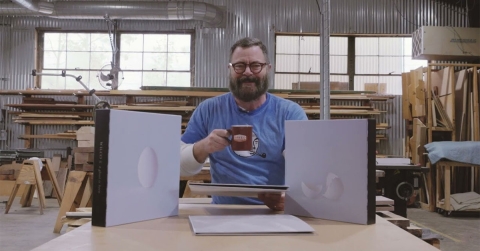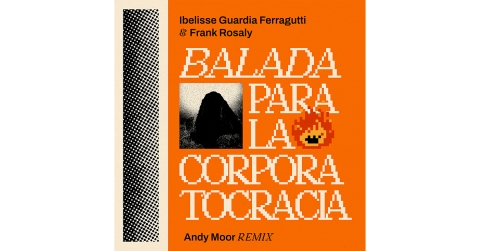Saxophonist Joshua Redman’s 2007 album Back East was his first recording as the leader of an acoustic sax/bass/drums trio. The seminal 1957 Way Out West by his hero Sonny Rollins provided a conceptual impetus for Redman’s album. Among other accolades, the New York Times called Back East, “the most agile and personal record of his career.” Going one step further on concepts from that album, Redman entered the studio with four friends and colleagues—Brian Blade (drums), Larry Grenadier (bass), Gregory Hutchinson (drums), and Reuben Rogers (bass)—who, with Redman, became a rotating, and intertwining, pair of trios. Together they recorded what became Redman’s new Nonesuch album, Compass, which will be released on January 13, 2009.
Saxophonist Joshua Redman’s 2007 album Back East was his first recording as the leader of an acoustic sax/bass/drums trio. The seminal 1957 Way Out West by his hero Sonny Rollins provided a conceptual impetus for Redman’s album. Among other accolades, the New York Times's Ben Ratliff called Back East, “the most agile and personal record of his career.” Going one step further on concepts from that album, Redman entered the studio with four friends and colleagues—Brian Blade (drums), Larry Grenadier (bass), Gregory Hutchinson (drums), and Reuben Rogers (bass)—who, with Redman, became a rotating, and intertwining, pair of trios. Together they recorded what became Redman’s new Nonesuch album, Compass, which will be released on January 13, 2009.
After playing with a few different groups throughout his Back East tour, Redman became interested in expanding on the musicians in the traditional trio configuration. He went into a New York City studio last March with few plans or expectations for the sessions. “Sometimes I’m guilty, with my recordings, of having too clear a plan. This time I said, ‘Hey, I just have to let go.’ If I try to plan it, it’s not going to work, so I’ll just think about some tunes that we could do with everybody together, we’ll get in the studio and see how it goes. There was a real kind of release for me with this project, an embrace of the unfamiliar.”
As the recording date approached, Redman asked himself, “What would it be like with multiple bassists and drummers? What would it be like to do something with everybody in the room together? Common sense was telling me to stay away, that it had the makings of a big mess. All that bass and drums could end up sounding muddy, clumsy, directionless, unfocused. But my imagination kept leading me back to this idea, and, at a certain point I decided it was worth a try.”
The result is an album’s worth of original compositions by Redman and his collaborators (with the exception of “Moonlight,” an interpretation of Beethoven’s “Moonlight” Sonata), performed and recorded in both traditional and non-traditional trio formats. Six tunes are played by the standard combo of sax, bass, drums; two tracks feature sax, two bassists, and drums; and five songs include the entire lineup in a double-trio configuration. Redman and James Farber, the engineer and co-producer of the record, place the musicians in the album mix exactly as they were positioned in the studio: for example, in the “double-trio” format, with one drummer on the far left, another on the far right, and the two bassists closer to the middle.
- Log in to post comments



